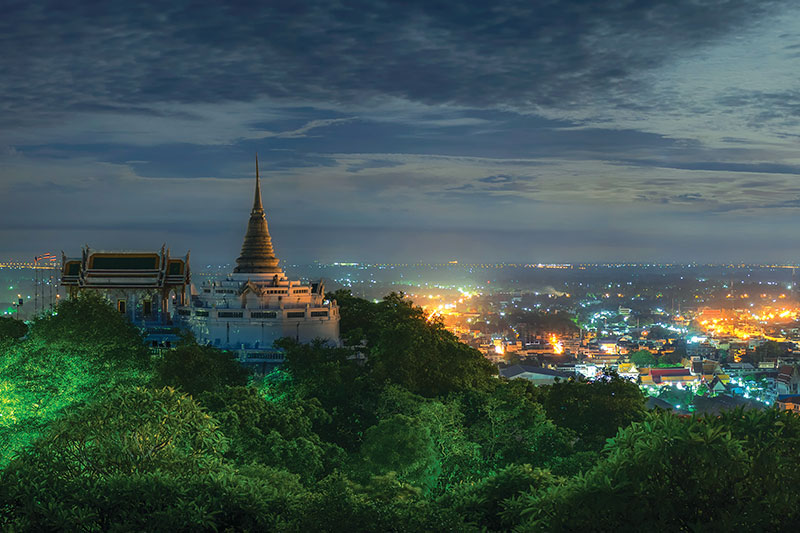
Precious Phetchaburi
Breathtaking beaches, cultural riches and a UNESCO City of Gastronomy make this coastal province one of Thailand’s true hidden gems
Words: Phoowadon Duangmee
While international jet-setters flock to Hua Hin, discerning locals opt for the allure of Phetchaburi province. Blessed with breathtaking beaches, outdoor adventures, cultural richness, and delectable cuisine, Phetchaburi sets itself apart from its more famous southern counterpart. Hua Hin caters to a growing international clientele and embodies sophistication, while Phetchaburi deliberately embraces a path less trodden, creating an authentic haven for local experiences.
Among the numerous compelling reasons to explore Phetchaburi province is its enchanting location, sandwiched between a beautiful coastline in the east and the Tenasserim Hills inland. Nicknamed “Little Ayutthaya”, Phetchaburi boasts a rich gastronomic legacy and abundant history and art stemming from its position in the prosperous Ayutthaya Kingdom during the 14th to 18th centuries.
After Ayutthaya fell in 1767, much of its cultural heritage was destroyed, but Phetchaburi emerged as a sanctuary for Ayutthaya’s arts. Adorned with ancient temples and home to skilled craftsmen and artisans, the province safeguarded this invaluable cultural legacy.
Adding to Phetchaburi’s allure are summer palaces built by three kings of Siam – Rama IV, Rama V, and Rama VI. The royal grandeur and local culture sit side by side, offering a unique glimpse of the intertwining threads of history, art, and regal heritage.
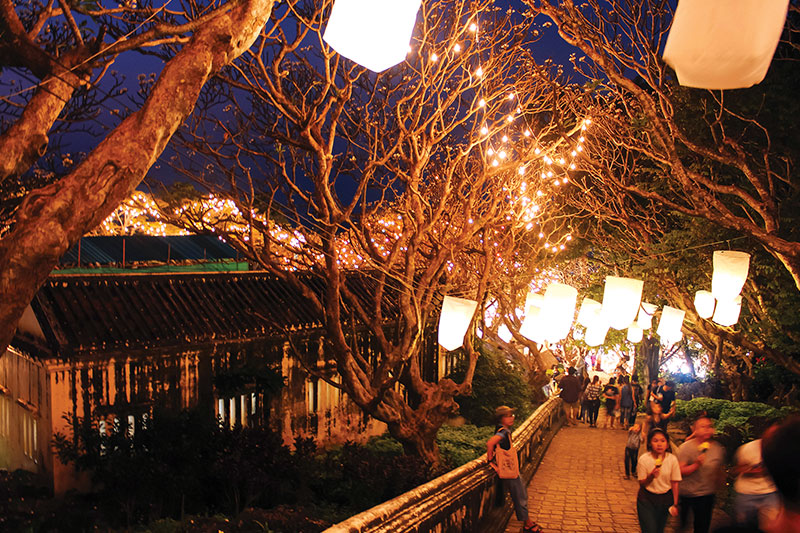
Most cultural treasures are clustered around the town centre, crowned by the Phra Nakhon Khiri Historical Park. In 1859m, King Mongkut (Rama IV) built his summer palace atop the hill overlooking the city. Today, visitors who climb the hill are rewarded with the royal residence, a pagoda, and temple. But for a peak experience, ascend the spiral staircase to the observatory where King Mongkut indulged in stargazing and astronomical measurements. Though daytime views may not unveil millions of stars, the white-washed pagoda of Phra That Chom Phet and petite temple of Wat Phra Kaew create a striking sight against the lush, forested hill and deep cobalt sky.
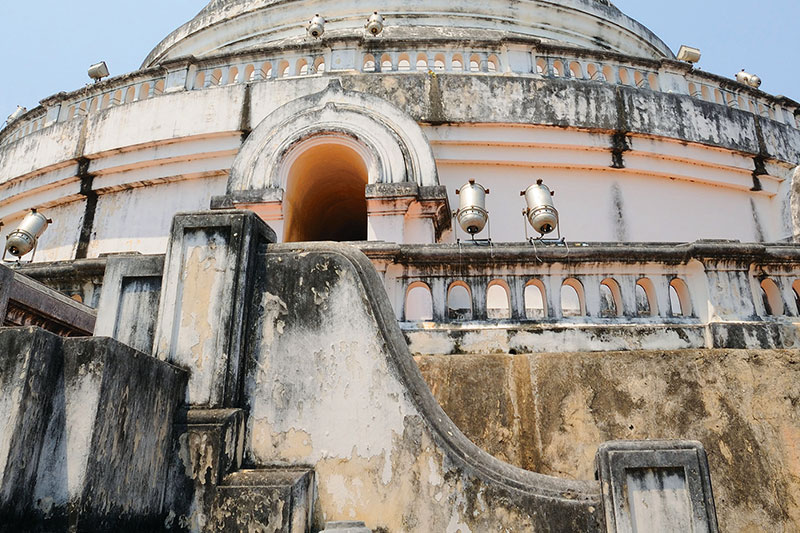
Next on your itinerary should be the splendid Wat Yai Suwannaram temple – an artistic gem adorned with intricate Ayutthaya paintings and architecture. Within the ordination hall, you’ll find mesmerising murals illustrating Thep Chumnum, also known as the Gathering of Angels. Nearby, the ornate teak open pavilion of Sala Kan Parian dates back to 17th-century Ayutthaya and was once the residence of Chao Fah Pra Kwan, the grandson of King Narai the Great. Here, exquisite woodcarvings showcase the exceptional craftmanship of artisans from the Ayutthaya era.
After exploring Wat Yai Suwannaram, we suggest a short ride to Wat Ko – a historic riverside community on the east bank of the Phetchaburi River. Its captivating fusion of Thai and Chinese cultures showcases 300 years of heritage dating back to the late Ayutthaya period. The spiritual heart is Wat Ko or Wat Ko Kaew Suttharam, a renowned temple with a rich history. The earth-toned murals of its ancient Ubosot (ordination hall) depict the Buddha’s journey alongside tableaux of daily life in Phetchaburi 300 years ago, including interactions with foreign traders.
Stroll through Wat Ko and you will stumble upon the exquisite Khanom Wan Kru Pranee, a century-old traditional Thai wooden sweet shop. Don’t miss the chance to try its speciality, Khanom Alua – delicate Thai meringue that melts on the tongue.
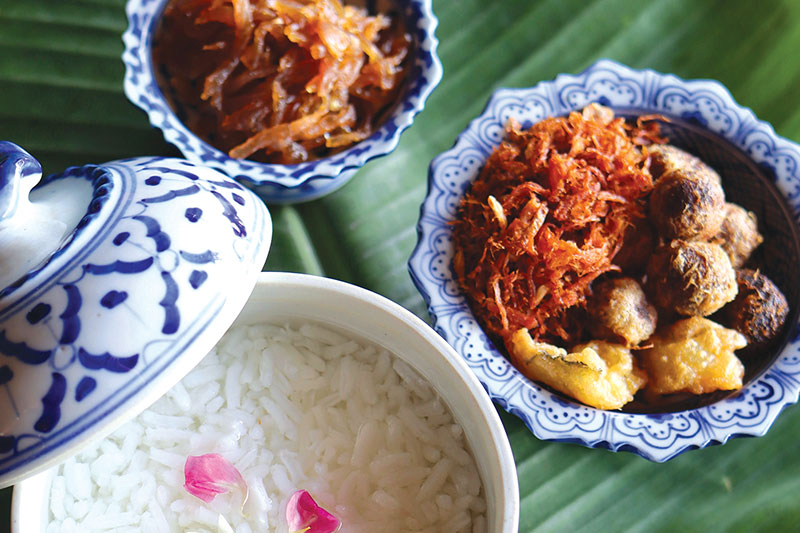
Phetchaburi is also one of Thailand’s culinary gems, celebrated for its rich cuisine and wealth of high-quality ingredients sourced from diverse habitats. From the sea-to-table freshness of local fish and the sweetness of palm sugar to the finest coastal salt, the province strikes a perfect balance between royal delicacies and gutsy flavours. Recognising its culinary excellence, UNESCO has honoured Phetchaburi with the title City of Gastronomy.
Visitors are in for a feast of treats, ranging from the refined Khao Chae (rice soaked in scented water) to street-food favourites like beef noodles in savoury broth and stir-fried Pad Thai.

The city’s culinary landscape is dominated by traditional shophouse eateries and open-air seaside restaurants. The former offer a quick fix with a diverse menu ranging from Pad Thai noodles to an array of seafood dishes. Seaside restaurants, on the other hand, provide an unparalleled experience with their stunning panoramic views of the ocean. Revel in the invigorating sea breeze, calming melody of the waves, and enchanting horizons, for a dining experience that delights all the senses.
Phetchaburi is also renowned for its sweet treasures, including Khanom Mor Gang (baked egg custard), Khanom Tan (toddy palm cak), Thong Muan (rolled sweet wafer), and Thong Yot (super-sweet egg-yolk drops).
To enjoy some of Phetchaburi’s famous delicacies, make sure to visit Tha Yang Pad Thai, an eatery boasting a century of history located just south of the city centre. The star attraction is Pad Thai, whose tantalising aroma of roasted noodles and expertly blended ingredients creates an unforgettable flavour experience.
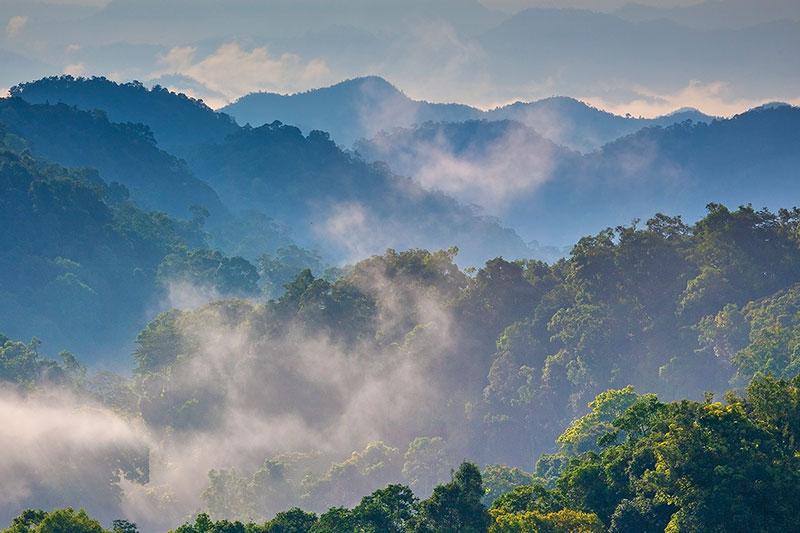
Beyond the town centre, Phetchaburi is a year-round haven for weekenders and nature enthusiasts.
About 60 kilometres west of the town, Kaeng Krachan National Park, Thailand’s largest wilderness reserve, attracts birdwatchers from around the globe with rare species such as the Ratchet-tailed treepie, plain-pouched hornbill, black-and-red broadbill, red-bearded bee-eater, and white-fronted scops owl.
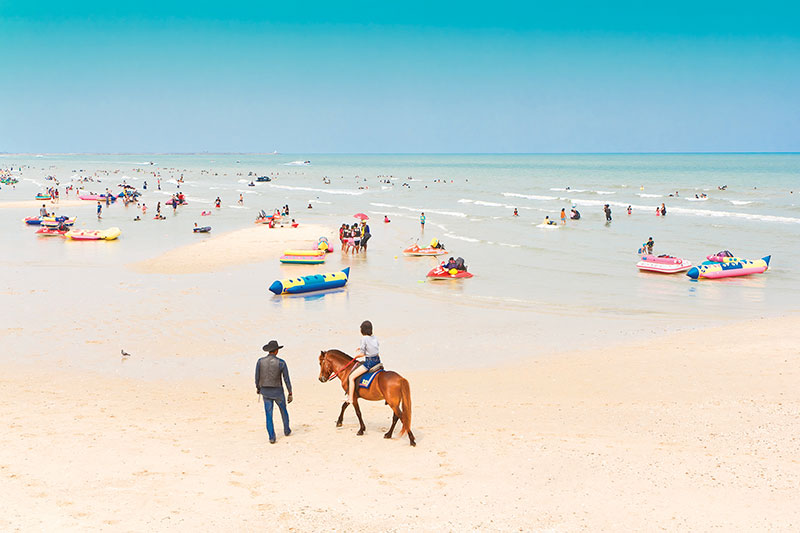
Further south, 40 kilometres from the town, Cha-Am Beach offers a serene escape with its expansive shoreline of fine golden sand and clear blue water. This picturesque strip is ideal for relaxation, leisurely walks, and various water activities. With its family-friendly ambiance, shallow waters, and gentle waves, Cha-Am is perfect for both nature lovers and those seeking a tranquil family beach holiday destination.
Your trip won’t be complete without a visit to Phetchaburi’s toddy palm country. This coastal province, steeped in agricultural heritage, has a rich history of palm sugar – a natural sweetener that graces almost every blocal dish. A mere 20 minutes south of Phetchaburi town, Uncle Thanom’s Toddy Palm plantation provides an authentic encounter with this sweet past.
